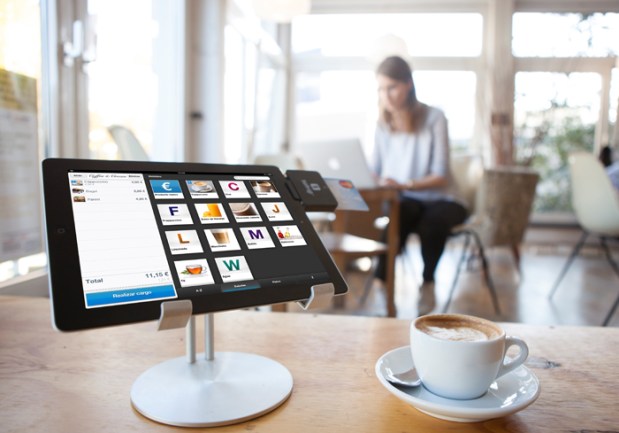Does SumUP Have An mPOS Advantage?

Followers of PYMNTS mPos Tracker know that the essential truth of mobile point of sale is competition. It seems as though every day a new payments technology player is launching to audition for the world on the mPOS stage.
European mPOS firm SumUp has been working in mPOS for two years, so they weren’t part of the first wave and are still relatively new to the space. But with a presence in 14 countries and a product built entirely in-house, SumUp has certainly made it past the audition phase.
MPD CEO Karen Webster caught up with their CEO and co-founder Daniel Klein, to get a first hand look at how SumUp views innovation in the mPOS space.
Klein said that the first an most important lesson to take away when considering jumping into point-of-sale – mobile or otherwise – there is one word to keep in mind: complicated. Working with acquirers and regulations—particularly in the heavily regulated EU where onboarding new customers can much more involved than the same process in the U.S.—everything is much, much more complicated and can take longer than it would appear from the outset.
But the industry is growing to meet those complexities.
“I think one big thing that has changed over the last couple of years is really the number of players and the complexity at which we’re moving forward in this environment. Other things I think have been confirmed: the attractiveness of the market, opportunity, the underlying assumption of this being a very disruptive movement where not only existing acquiring business models are being turned upside down and being reinvented completely but a new breed of opportunities open themselves up to us and other players in the industry.“
Klein noted that companies like SumUp face challenges on two sides.
Apart from regulatory constraints, accepting cards themselves has been something of a moving target in the European market. SumUp started accepting Chip and signature but they have since evolved as the marketplace has, with Chip and PIN (which is where Klein strongly suspects the U.S. will go).
These evolutions come at a cost—and Webster noted those costs often heap onto the merchants’ plate who have to pay more for mPOS hardware that can handle Chip and PIN technology. Since the appeal of mPOS is a reduced cost of hardware, the expense associated with producing this hardware is a significant concern.
SumUp has solved for that problem but lowering the cost of their tech to merchants is essential. These units can cost a few hundred euros and ring up for far less when provided by SumUp.
How do they do that?
They build all their own stuff, collapsing the supply chain, if you will, in order to remove various costs associated with needing to contract through third-parties.
“Nobody globally has really taken on this opportunity the way that we did, from the very beginning. Myself, I’m from the payments industry, so I’ve done payments business for many years. I realized that if we really wanted to crack the code on mobile payments globally and particularly in Europe, then we would have to own the technology behind it and offer (products) that are our products, 100 percent end to end. That’s what we need to do to be able to really innovate in this space. Otherwise, you have to rely on third party vendors to do the tricks for you.“
For example, SumUp’s Chip and PIN acceptance process is entirely their own. “We just went and redesigned this thing from the bottom up and said ’Okay let’s not take anything for granted. Let’s start over.’”
SumUp attracts a complex client base. Some of their users are new merchants, often, according to Klein, with absolutely no idea how to choose a method of accepting cards. Apart from a lower cost, SumUp offers its services without requiring a contract, on a pay-as-you-go basis.
The service, however, also appeals to merchants who are highly mobile—Klein mentioned outdoor sporting companies—because the ability to take payments on the move better enables them to offer the services they are already offering.
SumUp is also working to help build alternatives in markets—like India—and in business areas—like goods delivery—where cash on delivery remains unusually prevalent.
Yet one might wonder, as Webster did, if SumUp’s focus on the mobile business hints at the seeds of their eventual corporate undoing. After all, as pay on the go moves from cards to the mobile device, the widespread disappearance of plastic might actually be bad news for a company whose reason for existing is helping merchants take plastic cards.
But Klein doesn’t fear this future. Indeed, he welcomes it and argues that his service can be the bridge that helps move the average consumer off of their love affair with the pay card.
“I’m really actively working on making that happen and you will see mobile point of sale as an opportunity to do the first step towards mobile. To have a solution on the merchant side that is truly mobile and already interacts with a smart phone. And from that installation, from that app, to be able to reach out to the consumer and be able to build the bridge to also be able to use the mobile phone.”
He did note, however, that even with the bridge built, it might take some doing to convince consumers that they want to walk across it. He predicts plastic will likely stay with us for quite some time.
On the subject of building bridges to new nations, specifically the United States, Klen was coy. He noted that he had never ruled out the possibility of moving into the mPOS race in the U.S.—and now that the market is considering a wide conversion to their specialty EMV, he said that it does look particularly appealing. Then again—it is a big move—and not one that SumUp has on its immediate radar.
